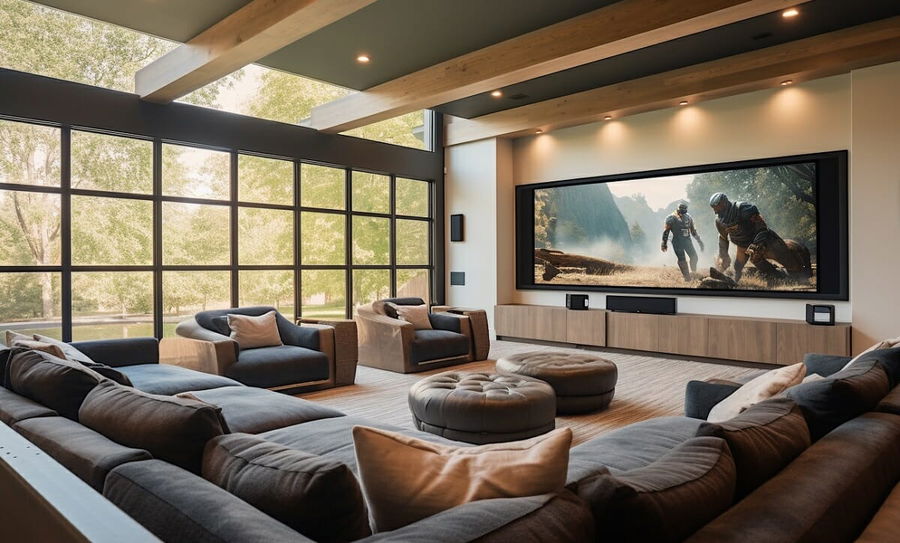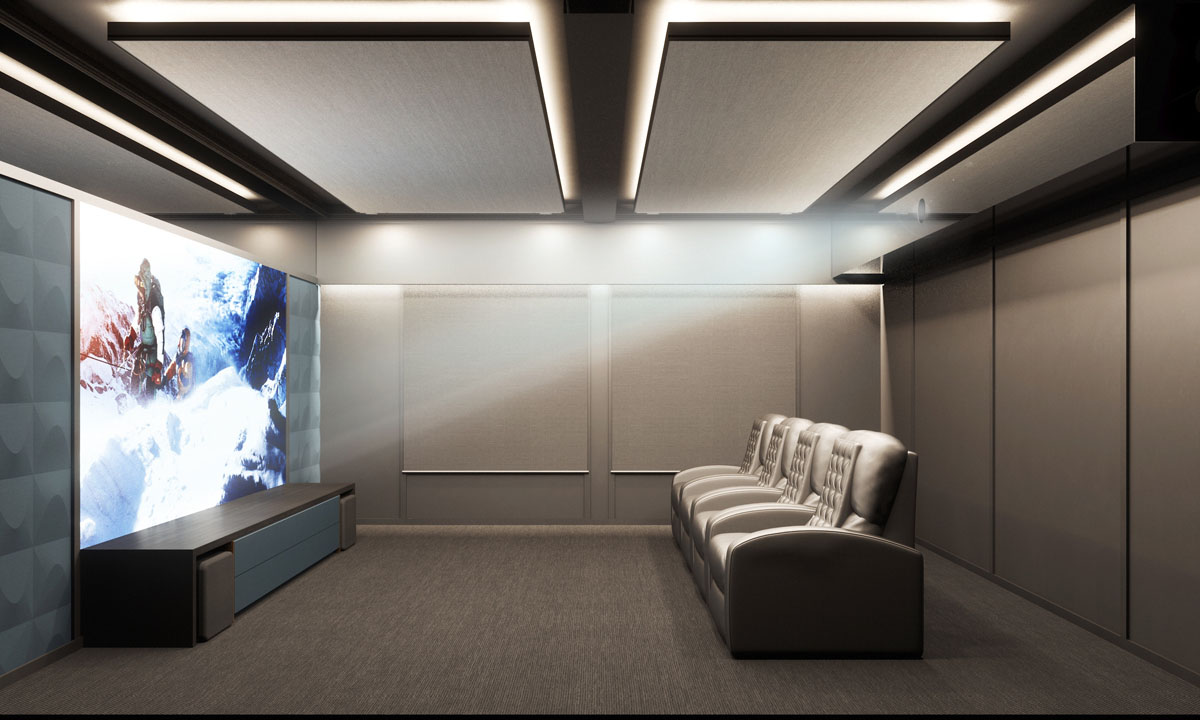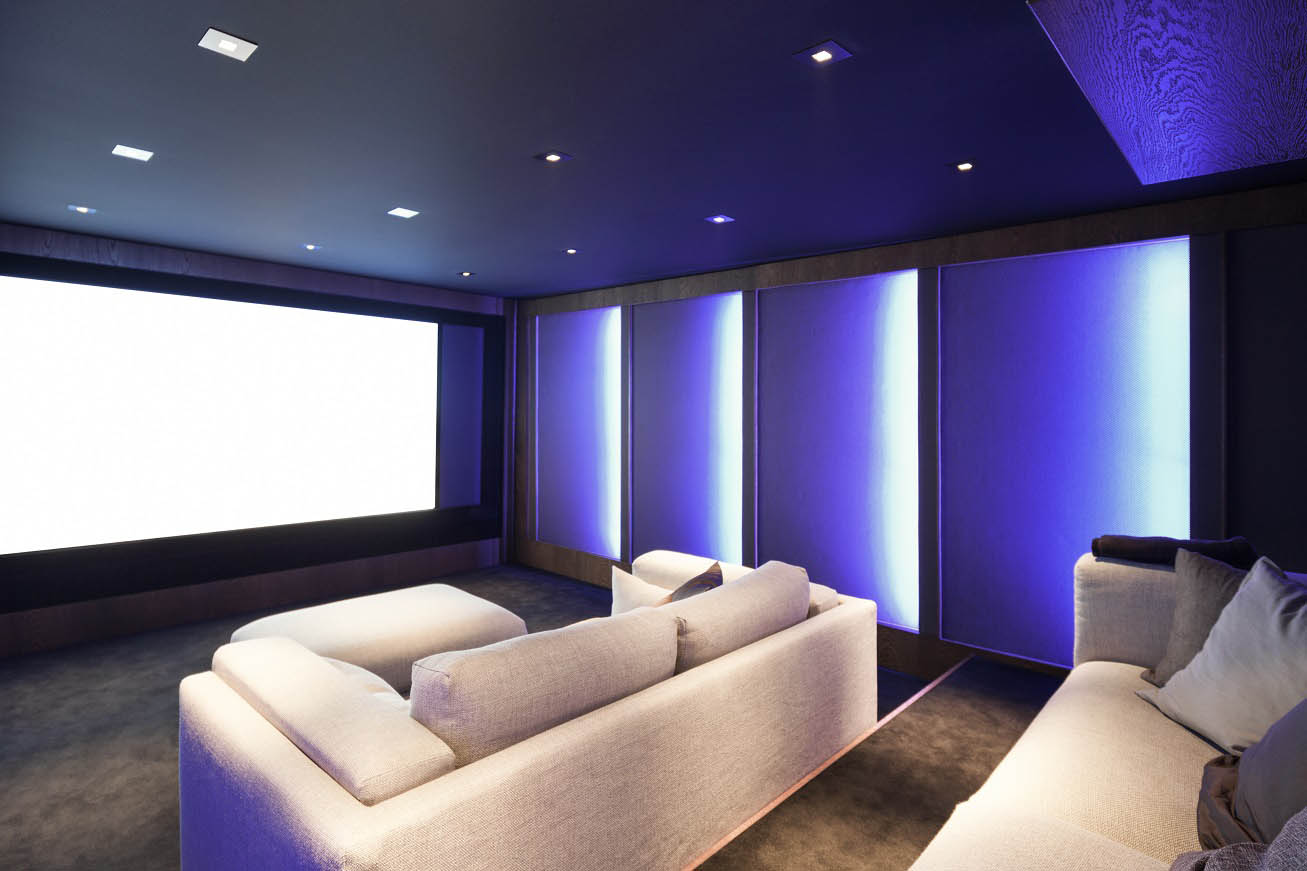The Ultimate Guide to Home Theater Installation Tampa Homeowners Trust
The Ultimate Guide to Home Theater Installation Tampa Homeowners Trust
Blog Article
Home Theater 101: Every Little Thing You Required to Know for a Cinematic Experience in the house
Creating a home movie theater that measures up to the cinematic experience of an industrial theater entails careful consideration of several parts, including screen choice, stereo, and area layout. Each element plays a crucial role in attaining the wanted ambiance and performance. Whether you are considering the excellent screen size or the complexities of surround noise, comprehending these principles is crucial. As we explore these crucial elements, it ends up being apparent that the choices made can substantially influence your overall watching experience, leaving one to contemplate just how these decisions will form your individual cinema.
Selecting the Right Screen
When establishing up a home cinema, choosing the best screen can make or damage the checking out experience - tampa home theater installation. The display functions as the centerpiece of your configuration, influencing photo high quality, seeing angles, and overall visual. Secret factors to take into consideration include screen resolution, size, and kind
Initially, establish the proper screen dimension based on your space dimensions and seating range. A general standard is to rest approximately 1.5 to 2.5 times the angled screen dimension for optimum viewing. Next off, choose between numerous display types, such as fixed-frame, motorized, or retracting screens, each offering distinctive advantages. Fixed-frame displays normally supply the best picture quality, while mechanized alternatives enable adaptability in room usage.
Resolution is an additional crucial aspect. For an absolutely immersive experience, take into consideration a screen developed for 4K or even 8K material, ensuring sharpness and clearness. In addition, consider the screen's gain, which affects brightness and comparison; a greater gain can boost illumination in well-lit rooms, while a lower gain may be better for darker settings.
Selecting Audio Equipment
Audio equipment is an important part of any home theater system, considerably improving the general watching experience. The option of audio gear can figure out the deepness, quality, and immersion of audio, critical for developing a motion picture atmosphere.
When picking audio tools, take into consideration a border audio system, which normally consists of a receiver, several speakers, and a subwoofer. A 5.1 or 7.1 channel system is recommended, where the initial number stands for the audio speakers and the second the subwoofer, providing an immersive soundscape. The receiver is the heart of the system, managing sound and video signals, and need to support contemporary styles like Dolby Atmos for a boosted spatial experience.
Quality audio speakers are crucial; search for versions that offer a balanced audio account with great bass action. Floor-standing audio speakers can produce richer audio, while shelf choices save room. Furthermore, think about wireless alternatives for simplicity of installation, although wired systems usually supply exceptional performance.

Optimal Seating Plans
Developing an excellent home cinema experience pivots dramatically on ideal seating plans. The plan of seats plays a vital role in both comfort and watching top quality, directly impacting the total motion picture experience.
First, think about the screen dimension and checking out distance. A common standard is to position seats at a range about 1.5 to 2.5 times the angled size of the screen. This makes certain an immersive experience without stressing the eyes.
Following, elevation is important. The back rows must be higher than the front to stay clear of obstructions if your seats is in a tiered style. For flat seats, guarantee that the front row is not also near to the screen, which everyone has a clear line of view.
Furthermore, consider the plan in terms of social characteristics. Group seats can enhance the common experience, while individual seats might be preferred for personal watching.

Lastly, Read More Here focus on comfort with ergonomic seats that supports extensive viewing periods. Including recliner chairs or supported seats can considerably boost the experience, making the home theater a favored location for both entertainment and leisure.
Lighting and Atmosphere
Reliable lighting and ambiance are necessary components of a well-designed home movie theater, as they dramatically influence the checking out experience. The appropriate lighting can enhance the cinematic feeling, while inadequate selections can diminish it. For optimal outcomes, consider a layered illumination method that includes ambient, job, and accent illumination.
Ambient lighting gives general illumination, ensuring that the area is not entirely dark, which can stress the eyes. Dimmer buttons are very recommended, allowing for adjustments based on the content being seen. Task illumination, such as wall sconces or floor lamps, provides functional illumination for activities like reading or navigating the room without interfering with the total ambience.
Accent lights can be made use of to highlight building features or create centerpieces, adding depth and passion to the area. LED strip lights behind screens or along shelves can give a refined glow that boosts the visual experience without overwhelming the audience.

Wiring and Installation Tips
A well-planned wiring setup is vital for accomplishing optimum efficiency in your home cinema system. Correct electrical wiring not just ensures top quality sound and video signals yet also improves the total visual of your room. Begin by drawing up your format, recognizing where each component will be placed, including your display, audio speakers, and receiver.
When picking wires, prioritize high-grade, properly determined wiring to reduce signal loss. HDMI cables need to be made use of for video links, while audio speaker cable ought to match the requirements of your speakers and amplifier. Go with in-wall rated wires to follow safety requirements and maintain a clean appearance.

Final Thought
In summary, developing a remarkable home cinema experience calls for cautious consideration of different elements, including display choice, audio review devices, seating plans, lights, and wiring. Each part plays an important duty in attaining optimum advice efficiency and ambiance, inevitably enhancing the satisfaction of home entertainment. By prioritizing these aspects, a cinematic atmosphere can be effectively reproduced, permitting immersive checking out experiences that equal standard cinema settings. Interest to detail in each location is essential for overall contentment.
Developing a home movie theater that equals the motion picture experience of a business theatre involves mindful factor to consider of numerous parts, consisting of display choice, audio systems, and room layout.When setting up a home cinema, picking the appropriate display can make or break the seeing experience. Next, pick in between different screen types, such as fixed-frame, mechanized, or retracting screens, each offering distinct benefits. For a genuinely immersive experience, think about a screen designed for 4K or also 8K material, ensuring intensity and clearness.In summary, creating an exceptional home cinema experience needs mindful factor to consider of different elements, consisting of screen option, audio devices, seating arrangements, lights, and electrical wiring.
Report this page